Mark Rippetoe on DLs and Oly Weight Lifting shoes
I have deadlifted heavy both ways. In my later lifting career, I switched over to weightlifting shoes and pulled my biggest deadlift—633 lbs—on two separate occasions. The shoes I wore were the old, Adidas weightlifting shoes that had a little heel (about 5/8-inch elevation from the ball of the foot to the heel).
When powerlifters think about getting back on the heels, they’re putting the bar over the middle of the foot because when you start pushing on the ground with a heavy bar, that’s where it’s going to be in balance. If it’s behind the middle of the foot, you’re going to be off balance backward. If it’s in front of the middle of the foot, you’re going to be off balance forward. So we don’t really want to be on the heels. We want the bar directly over the middle of the foot. A better cue would be to push the middle of the foot into the floor. I like to think about the contact path directly under the bar and push it into the floor. That keeps me in better balance than doing it any other way.
If I have a little heel under my shoe, that places my knee in a position that is a little bit forward, maybe three to five degrees more forward than it would be in flat shoes. This increases the quadriceps’ effectiveness off the floor because it increases the knee angle enough that it allows the quadriceps to open the knee up over a longer range of motion. Thus, the quadriceps has more work to do. It doesn’t increase the knee angle enough that posterior chain recruitment is diminished at all. The only way to do this would be to have enough of the heel so the lift would produce a knee angle so acute that it actually shortened the hamstrings from the distal end. We’re using the hamstrings from the proximal end to extend the hip. That’s the action of the posterior chain on the hip. If the knee angle is made acute enough that you actually put slack from the distal end into the hamstring you’re attempting to use from the proximal end, you diminish the effectiveness of the use of the posterior chain.
If the heel is low enough, there is no compromise between posterior chain recruitment and quadriceps recruitment. You only get that when the heel is too high. The heel on the shoe, while taking a tiny bit of tension off the hamstrings and making it a little bit easier to get into that extended lumbar position, also produces enough increase in the knee angle so that you get a little bit more work out of the quadriceps off the floor. I think it’s a reasonable compromise between that and the extra distance that the bar would have to be pulled. And the extra distance would be the height of the shoe directly over the middle of the foot, not at the end of the heel because you lock the bar out over the middle of the foot as well. That’s the extra distance that you’re pulling.
I also think wrestling shoes almost make it harder to get into the correct position because of the increased tension that the straighter knee places on the hamstrings. It’s harder to get the lumbar spine into an extended position against that hamstring tension. The pelvis is in a war for control between the muscles of the low back and the muscles of the hamstrings. If you’re going to pull the bar off the ground and not eventually hurt yourself, the lumbar spine needs to be in extension. That means the back muscles have to win the war.
In fact, the reason some deadlifters and most Olympic lifters rock forward onto their toes before they pull is because this takes the tension off the hamstrings and allows the low back to get into an arched position more easily. But it also means that the bar has to travel back to the mid-foot during the pull. This explains the “hook” in the bottom of the bar path in a clean and snatch, which is light enough compared to a deadlift that the bar can actually leave the ground in this position. They can be done this way, but a heavy deadlift won’t leave the ground very far in front of the mid-foot.
The bottom line is that I don’t want less muscle in the movement. I want as much muscle in the movement as I can get. I need them all because I’m going to use them all. Whether I’m at my one rep max or on my third attempt, I need as much stuff helping me out as possible.


 Please Scroll Down to See Forums Below
Please Scroll Down to See Forums Below 











